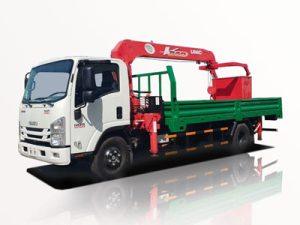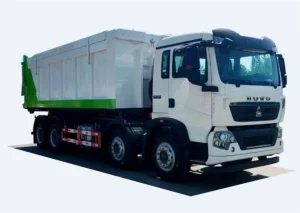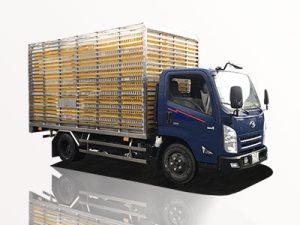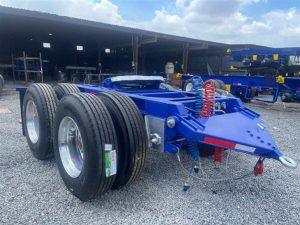Monday to Saturday - 8:00 -17:30
Who Invented the Refrigerated Car? A Comprehensive Exploration
The refrigerated car, a critical innovation in modern transportation, revolutionized the way perishable goods are transported across great distances. From fresh produce to dairy and frozen meats, understanding the origins of the refrigerated car provides insight into its profound impact on the global supply chain. This article will delve into who invented the refrigerated car, the evolution of this technology, and its significance in today’s world.
Understanding the Refrigerated Car
Before exploring its inventor, it’s essential to understand what a refrigerated car is. Essentially, it is a specially designed rail car equipped with refrigeration technology that allows for the transport of goods under controlled temperature conditions. This innovation paved the way for an efficient supply chain, ultimately benefiting consumers and producers alike.
The Basics of Refrigeration Technology
Refrigeration technology involves the process of removing heat from an enclosed area to lower its temperature. In the context of a refrigerated car, this technology ensures that products remain fresh during transport. Several factors influence the design and success of refrigeration systems, including:
- Insulation materials
- Refrigeration units (compressors, evaporators)
- Temperature control systems
The Inventor of the Refrigerated Car
To pinpoint the creator of the refrigerated car, we must turn back the clock to the mid-19th century. The invention is credited to Gustavus Franklin Swift, an American businessman and meat packer.
A Brief Biography of Gustavus Franklin Swift
Born in 1830 in Massachusetts, Gustavus Franklin Swift began his career in the meatpacking industry. In the early 1860s, he recognized a critical problem: transporting meat over long distances without spoilage. This realization led him to innovate the refrigerated rail car.
Swift’s Vision
Swift’s objective was clear: to create an efficient means to ship fresh meat from the Midwest to the bustling markets in the East. By combining his knowledge of meat packing with emerging refrigeration technologies, he aimed to minimize spoilage and maximize profit.
The Development of the Refrigerated Car
In 1867, Swift commissioned the construction of the first refrigerated railway car. His design utilized large blocks of ice in a compartment, which maintained a cool temperature during transport. This car was not only a breakthrough for the meat industry but also laid the foundation for refrigerated transport across different sectors.
The Role of the Ice Trade
Before the invention of the refrigerated car, the ice trade was pivotal in food preservation. Companies would harvest ice from lakes and rivers, distributing it to markets for cooling perishable goods. Swift’s refrigerated car transformed this practice by integrating mechanical refrigeration into transport.
First Successful Shipment
The first successful shipment of Swift’s refrigerated car took place in 1877, transporting beef from Chicago to New York City. This experiment was monumental, proving that perishable goods could be shipped over long distances effectively.
The Impact of Refrigerated Cars on Transportation
The success of refrigerated cars marked a turning point in the transportation industry. Several key developments emerged from this innovation:
Expansion of the Meat Industry
With the ability to transport meat across the country, meatpacking companies expanded significantly. Cities that had previously been cut off from fresh meat suddenly gained access, changing consumer habits and improving diets.
Growth of Other Industries
The refrigerated car’s influence extended beyond meat. Industries dealing with fruits, vegetables, dairy, and seafood also benefitted immensely. For instance, oranges from California and blueberries from Maine could reach consumers far and wide without spoilage.
Advancements in Refrigerated Transport
As technology progressed, refrigerated cars evolved further. Companies began introducing more advanced refrigeration systems, providing even better temperature control and efficiency.
Mechanical Refrigeration Systems
By the early 20th century, mechanical refrigeration units were integrated into rail cars. These systems utilized refrigerants to create a consistent cold environment, enabling longer trips without relying on ice. Key systems emerged, such as:
- Compression refrigeration
- Evaporative cooling
- Refrigerated containers
Key Innovations in Refrigerated Cars
| Year | Innovation | Details |
|---|---|---|
| 1867 | First Refrigerated Car | Ice compartment model by Gustavus Franklin Swift |
| 1900 | Mechanical Refrigeration | Introduction of mechanical systems to maintain temperatures |
| 1950s | Containerization | Refrigerated containers revolutionized sea transport |
The Rise of Refrigerated Trucks
In the mid-20th century, the advent of refrigerated trucks complemented the existing refrigerated rail system. By allowing for more direct transport to endpoints, trucks became essential in the logistics of perishable goods.
Benefits of Refrigerated Trucks
- Direct delivery to retail locations
- Increased flexibility in routes
- Lower operational costs over time
Challenges Faced by Refrigerated Transport
Despite its benefits, refrigerated transport has encountered various challenges, including:
- High energy consumption
- Initial investment costs
- Maintenance of refrigeration systems
The Future of Refrigerated Transportation
With advancements in technology, the future of refrigerated transport looks promising. Innovations such as energy-efficient cooling systems and alternative fuel sources are being explored to reduce environmental impact.
Emerging Technologies
- Solar-powered refrigeration
- IoT-enabled monitoring systems
- Automated temperature control
Case Studies of Innovations
Several companies are already trialing innovative approaches in refrigerated transport:
- Amazon: Utilizes advanced tracking systems for temperature-sensitive delivery.
- Walmart: Implements energy-efficient refrigerated trucks to reduce costs.
Practical Tips for Using Refrigerated Transport
For businesses involved in transporting perishable goods, understanding best practices is crucial:
Temperature Management
Always monitor and maintain appropriate temperatures during transport. Use reliable technology to ensure optimal conditions.
Maximizing Efficiency
- Plan routes thoughtfully to minimize transport time.
- Consolidate loads when possible to reduce costs.
Regular Maintenance
Implement a routine maintenance schedule for refrigerated vehicles to prevent breakdowns and ensure consistent performance.
Frequently Asked Questions
1. Who invented the refrigerated car?
Gustavus Franklin Swift is credited with inventing the refrigerated car in the 1860s, which revolutionized the transportation of perishable goods.
2. How did refrigerated cars impact the food industry?
Refrigerated cars allowed for the transport of fresh food over long distances without spoilage, leading to broader distribution and better dietary options for consumers.
3. What technology is used in refrigerated transport today?
Modern refrigerated transport utilizes mechanical refrigeration systems, IoT-enabled monitoring, and various innovations aimed at improving energy efficiency and temperature control.
4. Are refrigerated trucks still used today?
Yes, refrigerated trucks play a vital role in the logistics of transporting perishable goods, complementing rail transport for more direct deliveries.
5. What challenges do businesses face in refrigerated transport?
Challenges include high operational costs, energy consumption, and the need for effective temperature management to maintain product quality.
6. What is the future of refrigerated transport?
The future includes advancements such as alternative energy sources, improved efficiency, and enhanced temperature control technologies across the refrigerated transport sector.









